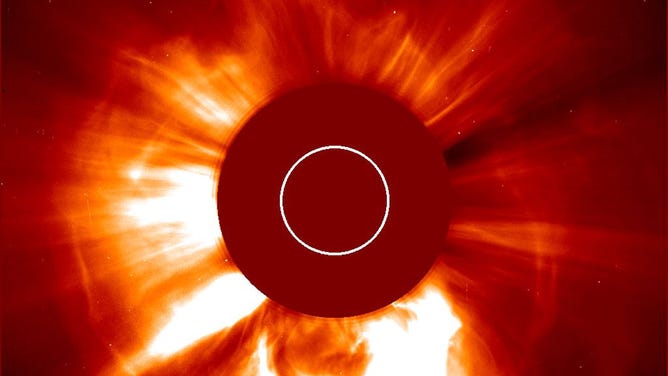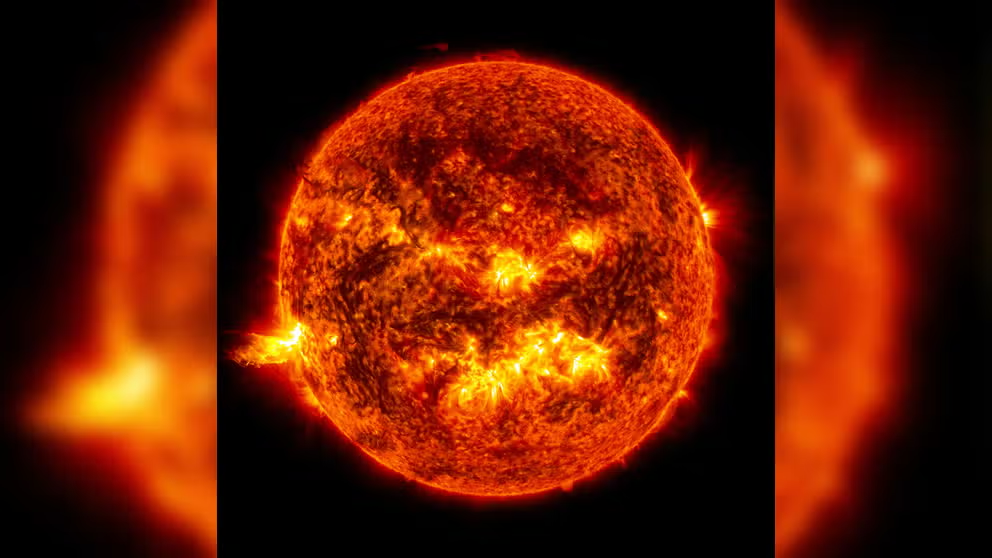X marks the (sun)spot: How NASA rates the strength of solar flares
NASA has developed a three-pronged rating system for measuring solar flares so those potentially affected can prepare for the storm's arrival here on Earth.

A major solar eruption is shown in progress October 28, 2003.
(Solar & Heliospheric Observatory/NASA / Getty Images)
The sun is a bubbling cauldron of activity, not just heating our corner of the universe but occasionally spewing out massive solar flares.
Those flares are not harmful to human health, but stronger ones can significantly affect satellite and communication operations.
To that end, NASA has developed a three-pronged rating system for measuring solar flares so those potentially affected can prepare for the storm's arrival here on Earth.
HOW TO WATCH FOX WEATHER ON TV
The classifications are broken down into three main categories: C, M and X and the overall scale are logarithmic (similar to the earthquake magnitude scale). An M-class flare is 10 times larger than a C class, while an X-class flare is 10 times stronger than an M class and 100-times stronger than a C class.
How scientists measure solar flares
NASA gives this short narrated video about solar flares, how they are classified, and their effect on Earth. (Video courtesy: NASA)
Each scale is divided into a 1-9 rating within each letter class, giving the rating better precision, NASA says. For example, A flare could rate as a C7 or an M4 or an X3, and an M4 is more potent than an M2. A C10 would just become an M1 flare, and an M10 would become an X1 rating.
NASA says C-class and more minor flares are too weak to be noticed on Earth, while M-class flares can cause brief radio blackouts at the poles and minor radiation storms that could affect astronauts.
7 THINGS TO KNOW ABOUT THE NORTHERN LIGHTS
But it's the X-class flares that get scientists' attention. Since some flares can be more than 10 times the power of an X1 flare, their scale is open-ended at the top. NASA says the most powerful flare measured with modern methods was in 2003 when it was so powerful it overloaded the sensors, cutting out at a rating of X28!
"The biggest X-class flares are by far the largest explosions in the solar system and are awesome to watch," wrote Karen C. Fox with NASA's Goddard Space Flight Center. "Loops tens of times the size of Earth leap up off the sun's surface when the sun's magnetic fields cross over each other and reconnect. In the biggest events, this reconnection process can produce as much energy as a billion hydrogen bombs."
Fox says these flares can cause long-lasting radiation storms that can harm satellites, communication systems, and power grids. But with enough warning, satellites can be put into a protective mode.
Intense X flares can also trigger brilliant displays of the Northern Lights, even down to latitudes usually too far south to see the aurora.
